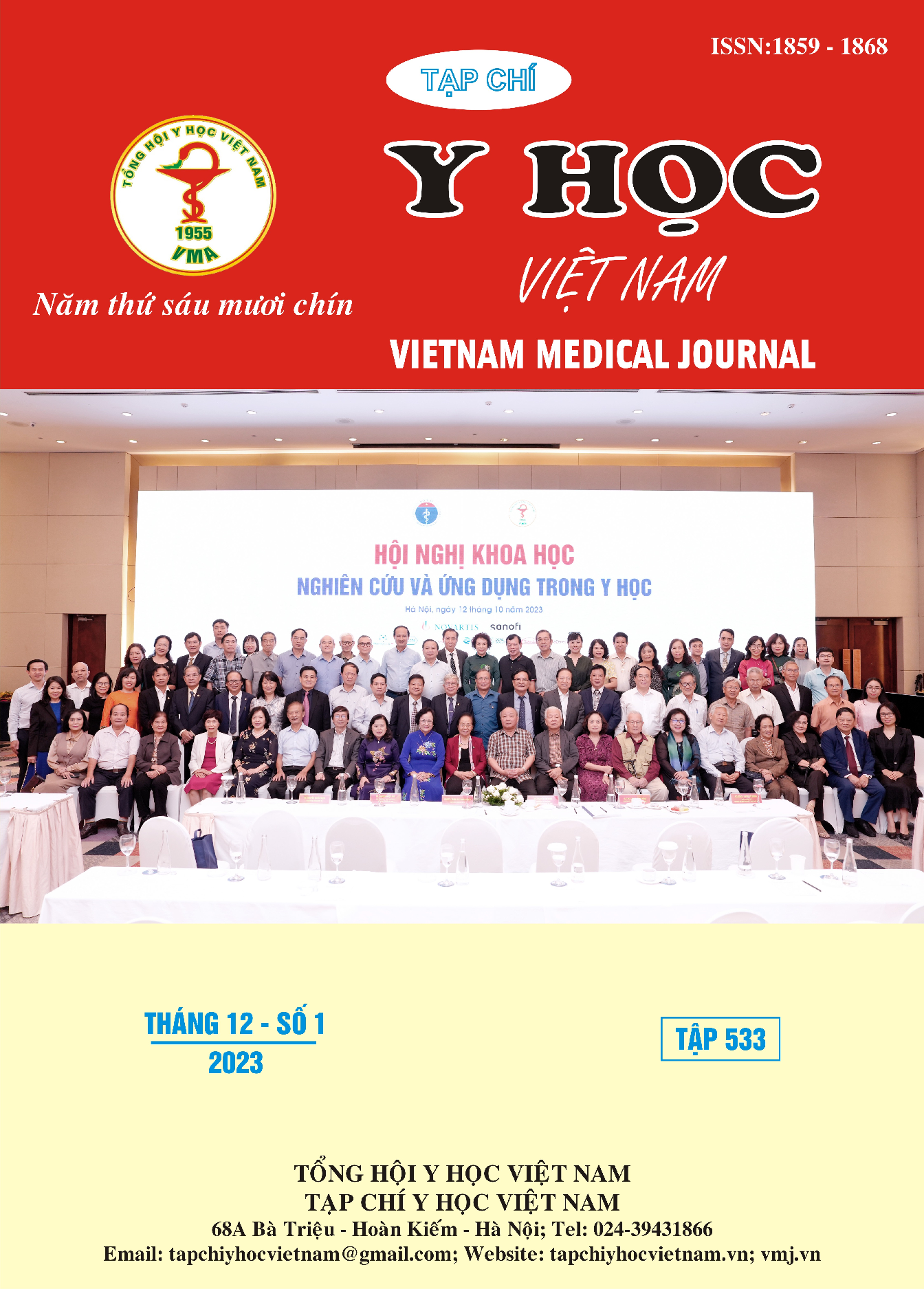KẾT QUẢ SỚM PHẪU THUẬT MỞ SỌ GIẢM ÁP ĐIỀU TRỊ NHỒI MÁU NÃO DIỆN RỘNG DO TẮC ĐỘNG MẠCH NÃO GIỮA TẠI BỆNH VIỆN QUÂN Y 103
Nội dung chính của bài viết
Tóm tắt
Mục tiêu: đánh giá kết quả phẫu thuật mở sọ giảm áp điều trị nhồi máu não diện rộng do tắc động mạch não giữa tại bệnh viện Quân Y 103. Đối tượng và phương pháp: nghiên cứu mô lâm sàng trên 32 bệnh nhân nhồi máu não diện rộng do tắc động mạch não giữa tại bệnh viện Quân Y 103 từ 1 năm 2017 đến tháng 9 năm 2022. Đánh giá kết quả sớm sau phẫu thuật. Kết quả: Tỷ lệ sống khi ra viện đạt 96,9%. Kết quả sớm cho thấy có 59,4% có sự cải thiện về tri giác so với trước phẫu thuật. Phim cắt lớp vi tính chụp kiểm tra có sự giảm mức độ đè đẩy đường giữa, số bệnh nhân có mức di lệch đường giữa độ III và độ IV giảm từ 18,7% xuống 15,6%. Kết luận: Phẫu thuật mở sợ giảm áp điều trị nhồi máu não diện rộng do tắc động mạch não giữa cho thấy có kết quả tốt về tri giác, giảm mức độ đè đẩy đường giữa.
Chi tiết bài viết
Từ khóa
mở sọ giảm áp, nhồi máu não diện rộng, động mạch não giữa.
Tài liệu tham khảo
2. S. Das, P. Mitchell, N. Ross, et al. (2019). Decompressive Hemicraniectomy in the Treatment of Malignant Middle Cerebral Artery Infarction: A Meta-Analysis. World Neurosurg, 123: 8-16.
3. William J. Powers, Alejandro A. Rabinstein, Teri Ackerson, et al. (2018). 2018 Guidelines for the Early Management of Patients With Acute Ischemic Stroke: A Guideline for Healthcare Professionals From the American Heart Association/ American Stroke Association49(3): e46-e99.
4. B. Kamal Alam, A. S. Bukhari, S. Assad, et al. (2017). Functional Outcome After Decompressive Craniectomy in Patients with Dominant or Non-Dominant Malignant Middle Cerebral Infarcts. Cureus, 9(1): e997.
5. D. Staykov, R. Gupta (2011). Hemicraniectomy in malignant middle cerebral artery infarction. Stroke, 42(2): 513-6.
6. Katayoun Vahedi, Eric Vicaut, Joaquim Mateo, et al. (2007). Sequential-Design, Multicenter, Randomized, Controlled Trial of Early Decompressive Craniectomy in Malignant Middle Cerebral Artery Infarction (DECIMAL Trial)38(9): 2506-2517.
7. J. Hofmeijer, L. J. Kappelle, A. Algra, et al. (2009). Surgical decompression for space-occupying cerebral infarction (the Hemicraniectomy After Middle Cerebral Artery infarction with Life-threatening Edema Trial [HAMLET]): a multicentre, open, randomised trial. Lancet Neurol, 8(4): 326-333.
8. Katayoun Vahedi, Jeannette Hofmeijer, Eric Juettler, et al. (2007). Early decompressive surgery in malignant infarction of the middle cerebral artery: a pooled analysis of three randomised controlled trials. The Lancet Neurology, 6(3): 215-222.
9. E. Jüttler, S. Schwab, P. Schmiedek, et al. (2007). Decompressive Surgery for the Treatment of Malignant Infarction of the Middle Cerebral Artery (DESTINY): a randomized, controlled trial. Stroke, 38(9): 2518-2525.
10. Dae-Hyun Kim, Sang-Bae Ko, Jae-Kwan Cha, et al. (2015). Updated Korean Clinical Practice Guidelines on Decompressive Surgery for Malignant Middle Cerebral Artery Territory Infarction. Journal of stroke, 17(3): 369-376.


